Local Temperature App: Features and Advantages Explained
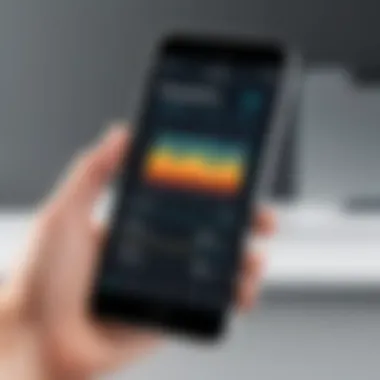
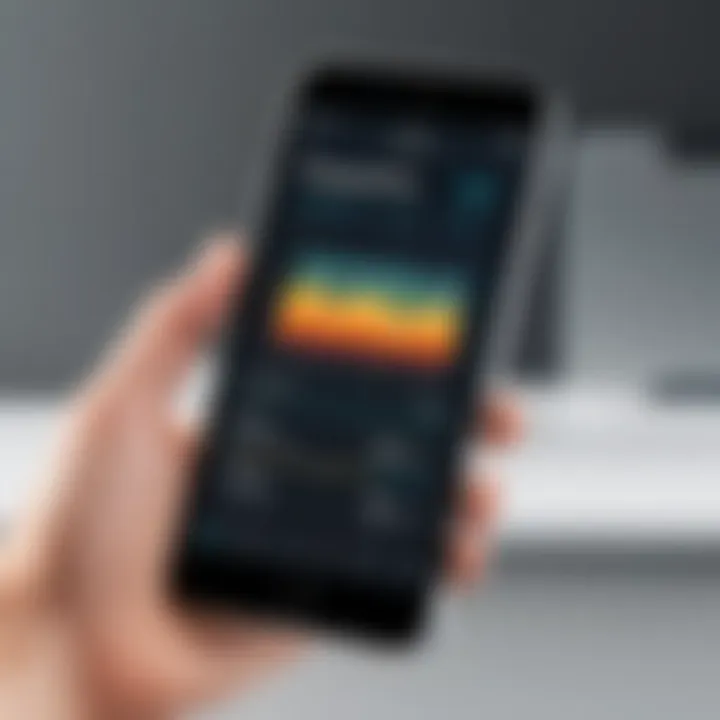
Intro
In the ever-evolving landscape of technology, the local temperature app stands out as a practical tool that many individuals now rely on. As we plunge into the world of real-time weather information, these applications have carved out a significant niche, providing not just temperature readings but a broader understanding of the climatic conditions impacting our daily lives. This section will shed light on the overarching technology behind these applications, examining their key specifications and unique features that set them apart in a crowded marketplace.
Overview of the Technology
Local temperature apps harness a myriad of technologies to deliver accurate weather data at your fingertips. Gearing towards a tech-savvy audience, understanding the core components behind these apps can elevate their appreciation of what they offer.
Key Specifications
Many local temperature apps use sensors integrated into smartphones or data sourced from nearby weather stations. For users in urban areas, this means rapid access to local conditions, including wind speed, humidity, and temperature shifts that can occur within just a few blocks.
- Real-Time Data: Frequent updates ensure that users are always informed.
- Geolocation: GPS integration allows the app to deliver tailored information based on the user's exact location.
- User-Friendly Interface: Many designs prioritize ease of navigation, helping users quickly access crucial data without unnecessary fuss.
Unique Selling Points
What makes these local temperature apps truly stand out? It’s about more than just numbers; it’s about the way they fit into modern life. Features that make them appealing include:
- Customization Options: Users can often set alerts for extreme weather conditions, ensuring they are always primed for what's next.
- Community Input: Some apps allow users to share conditions, enhancing the accuracy of local readings collaboratively.
- Integration with Smart Devices: Connectivity to other smart home devices can result in automated responses to weather patterns – imagine your thermostat adjusting itself based on real-time temperature changes.
"The true power of local temperature apps lies in how they transform everyday decisions, from what to wear to outdoor activity planning."
By dissecting the key specifications and unique selling points, we see how these applications not only function as weather predictors but also interlace into the fabric of our daily lives. They deliver personalized insights that can lead to smarter, informed choices, particularly for those in dynamic environments.
Design and Build Quality
An often-overlooked aspect of local temperature apps is their design and usability. A well-constructed app can dramatically enhance the user experience.
Material Used
Though it might sound a bit abstract when discussing an app, the material from which the interface is built plays a huge role. It’s all about the digital surroundings that foster a conducive user environment.
- Visual Aesthetics: Clean lines and pleasing color palettes can draw users in.
- Responsive Design: It’s essential that these apps perform seamlessly across varied devices - from tablets to smartphones.
Ergonomics and Usability
The usability of temperature apps extends beyond their aesthetic appeal. They should feel intuitive. Users should be able to navigate effortlessly through various features without a steep learning curve.
- Accessibility: For the tech-savvy and the less experienced, ensuring that all users can engage with the app is key.
- Minimalist Layout: Keeping it clean and straightforward helps to avoid overwhelming users with unnecessary clutter.
Prolusion to Local Temperature Apps
In a world where we often find ourselves at the mercy of the elements, local temperature apps have emerged as essential tools for navigating our daily lives. These applications not only provide critical temperature updates but also help us make informed decisions about our activities. Whether it's planning a picnic, deciding what to wear, or managing energy consumption at home, having instant access to accurate temperature information is invaluable. But understanding how these apps operate and their various benefits is equally important.
Conceptual Framework
Local temperature apps function on a premise that marries technology with everyday needs. They aggregate data from an array of sources—ranging from weather stations to satellite imagery—and present it in user-friendly interfaces. Think of them as your personal weather station in the palm of your hand. Users can input their location or enable geolocation settings, pulling in specific temperature data tailored to their immediate surroundings. The conceptual framework is centered on providing timely information that directly influences behaviors and choices. By translating complex meteorological data into digestible insights, these apps empower users to respond effectively to changing weather conditions.
Historical Context
The journey of temperature monitoring began centuries ago, with rudimentary tools like thermometers capturing the interest of early scientists and weather enthusiasts. Fast forward to the 20th century, and the advent of digital technology transformed how we assess and analyze weather patterns. Eventually, the rise of smartphones gave birth to a new era of local temperature monitoring apps. In the early 2010s, as mobile technology advanced, these apps began gaining traction. They have since evolved from simple temperature readings to sophisticated applications incorporating features like severe weather alerts and integration with smart home systems. Today, they are not just tools but integral components of our technologically enhanced lives, showcasing how far we've come in our quest for knowledge about the weather around us.
Key Functionalities of Temperature Apps
When it comes to local temperature apps, the functionalities they offer significantly shape users' experiences and the advantages they provide. Today’s tech-savvy individuals crave real-time access to weather data that can impact their daily routines. Each functionality plays a critical role in not just delivering data but in actively engaging users in ecosystem awareness and preparation.
Real-Time Temperature Monitoring
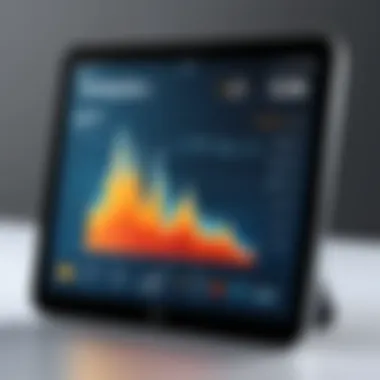
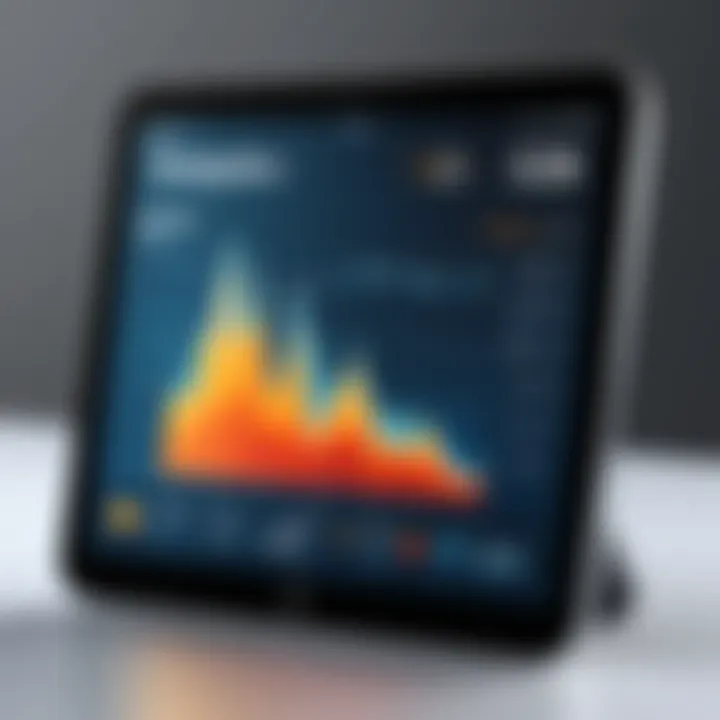
Real-time temperature monitoring is the backbone of any temperature app, acting much like a vigilant sentry perched on the user’s digital shoulder. With a constant flow of data, these apps deliver updates that help individuals adapt promptly to temperature fluctuations. For instance, consider that slightly chilly morning where a jacket seems overboard until the sun slips beneath the clouds, leading to a quick chill in the air. With real-time data, users can dress appropriately without any wasted effort.
Moreover, this continuous stream of updates is not just a matter of convenience; it can significantly affect decisions ranging from outdoor activities to planning family get-togethers. Users can receive notifications about sudden temperature drops or spikes based on their current geolocation. Imagine being informed via push notifications about a heatwave warning while lounging on your couch. This feature enhances activity planning for everything from quick grocery runs to major events like a friend’s wedding.
Weather Forecast Integration
Moving forward, integrating weather forecasts into local temperature apps adds a rich layer of usefulness. It’s like going beyond simply knowing the temperature to grasping the full context of the weather. Typically, these apps pull data from various reliable meteorological sources, delivering a comprehensive weather outlook unique to the user’s location. This feature proves invaluable when planning outdoor activities, travel, or even daily commutes.
Users typically appreciate the accessibility of extended forecasts that can range from hourly updates to a full week ahead. For example, those planning an outdoor wedding might discover that a sudden rain shower could be on the horizon five days from now and might opt for a tent rental. No one likes an unexpected rain dance when hosting guests. This kind of predictive capability makes local temperature apps not just tools but essential planners in our busy lives.
User Interface and Experience
Now, let’s talk user interface and experience. It can’t be overstated how vital design and usability are in ensuring that these apps resonate with their audience. After all, a well-designedapp is like a smooth highway without potholes—easy to navigate and pleasant to use. A cluttered or confusing interface will send users running faster than a cold front.
Temperature apps that prioritize minimalistic design tend to win user favor. Features such as intuitive navigation, interactive temperature maps, and customizable dashboards enrich user engagement, often leaving users coming back for more. Knowing that a user can glance at their phone and instantly find required information without wading through complexity is a significant advantage.
Additionally, adapting the app's settings to local nuances—like adopting regional color schemes for temperature visualizations—adds a personal touch that feels welcoming. Such attention to user experience is what separates the best apps from the mediocre ones.
"A temperature app that offers real-time monitoring, forecasts, and a seamless user experience is like a Swiss Army knife for weather-watching enthusiasts."
By blending these features, local temperature apps empower users with not just data but actionable insights, enhancing the overall interaction with weather in their lives.
Technological Underpinnings
Understanding the technological underpinnings of local temperature apps is crucial for comprehending how they deliver accurate and timely information to users. These applications are not just casual tools; they possess intricate systems that aggregate and process weather data. In this section, we focus on the specific elements that make these apps so effective, the advantages they offer, and key considerations when relying on technology for weather information.
Data Sources for Temperature Measurement
At the heart of any weather application is its data source. Local temperature apps leverage a combination of weather stations, satellites, and even crowd-sourced information to offer real-time updates. These diverse sources are critical because they provide a more holistic view of the atmospheric conditions.
- Weather Stations: These are the backbone, typically established by meteorological organizations. They gather data from various sensors, measuring temperature, humidity, and more.
- Satellites: Although not specific to local areas, satellite data is useful for getting a broader perspective on weather patterns, especially in regions with fewer weather stations. Satellite imagery helps detect storms before they hit ground level.
- Crowd-sourced Data: Interestingly, some apps incorporate data from users who report their own temperature readings. This can be especially useful in remote areas or during sudden weather changes.
Utilizing a mix of these sources ensures that local temperature apps remain robust in their forecasts, adding reliability for the user.
Geolocation Features
Geolocation is what truly differentiates local temperature apps from generic weather sites. By identifying a user’s precise location, these apps can deliver hyper-local data tailored specifically for in-the-moment decisions.
This technology works through GPS or cellular network data, allowing the app to gather information about the weather conditions in the user's vicinity. The importance of geolocation cannot be overstated:
- Localized Data: Instead of generalized weather forecasts, users receive specific forecasts that consider their immediate surroundings.
- Dynamic Alerts: Many apps not only provide current temperatures but also send push notifications for sudden weather changes which could affect the user—like a surprise rain shower.
The precision of geolocation minimizes the chances of misinformation and allows users to plan their day with confidence, aligning activities according to real-time weather conditions.
Cloud Computing in Weather Apps
Cloud computing plays an indispensable role in the operational efficiency of local temperature apps. It enables the collection, storage, and analysis of vast amounts of meteorological data without overwhelming local servers or devices.
- Scalability: As more users join the app, cloud services can scale resources dynamically. This elasticity means users have access to updated and accurate information without lags.
- Data Processing Power: Cloud technology allows for complex algorithm applications, analyzing weather patterns and improving forecast accuracy. Through machine learning and advanced computational algorithms, app developers can continuously enhance their predictive capabilities.
- Cross-Platform Accessibility: Users can access their temperature apps on various devices. When data is stored in the cloud, it doesn’t matter if you’re on a smartphone, tablet, or PC; the information remains consistent.
Cloud computing thus serves as the backbone of local temperature applications, enabling them to operate smoothly, providing users with a seamless experience regardless of their digital environment.
"The marriage of cloud computing and geolocation represents a significant leap forward in the way we interact with weather information."
Each of these technological components weaves together, creating an intricate and efficient system that empowers users to stay informed and prepared for whatever nature throws their way.
Advantages of Using Local Temperature Apps
In our fast-paced world, keeping tabs on local temperatures is not just a pastime for weather aficionados anymore. Local temperature apps have emerged as essential tools that do more than tell us when to pack an umbrella or prepare for a chilly day ahead. They bring a myriad of advantages that enhance our daily lives, productivity, and even our financial health. Understanding these benefits allows us to appreciate the integral role these applications play in our everyday activities.
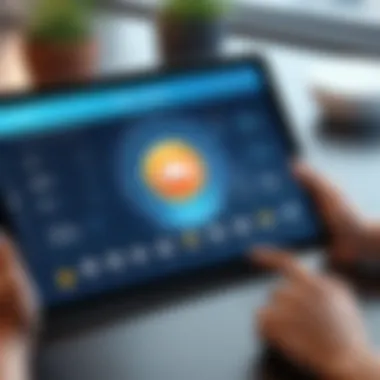

Enhanced Planning and Preparedness
Local temperature apps empower users to plan their day with greater foresight. For instance, imagine waking up to a forecast that informs you of an unexpected drop in temperature later in the day. This immediate awareness facilitates crucial decisions—like whether to wear a heavier coat or postpone an outdoor activity. In a way, it’s like having a weather-savvy friend nudging you in the right direction.
- Saves Time: Users can quickly check temperatures and weather conditions before heading out, eliminating guesswork.
- Special Events: For those hosting events like picnics or weddings, knowing the expected weather conditions helps in making last-minute adjustments.
- Safety: In severe weather cases, these apps can warn users about conditions like frost or heatwaves, allowing for timely actions to ensure safety.
"Knowledge is power. For those who rely on local temperature apps, it could also mean comfort and safety."
Energy Efficiency and Cost Savings
When it comes to energy consumption, even small adjustments can lead to significant savings on utility bills. Local temperature apps assist in using energy resources wisely.
- Heating and Cooling: By keeping an eye on the current and upcoming temperatures, users can optimize heating or cooling settings in their homes, using energy only when needed.
- Smart Thermostats: Integration with smart home systems allows for automatic adjustments based on real-time weather updates. For example, if a chilly front is approaching, your smart thermostat can kick in to maintain a cozy environment without constantly running.
- Service Assessments: For businesses, being aware of temperature trends can lead to smart operational changes. A shop owner can decide to adjust their heating or cooling systems during peak usage times, thus curtailing unnecessary expenditures.
Improved Daily Activity Scheduling
In today’s bustling lifestyle, coordination and timing are essential. Local temperature apps play an essential role in enabling users to nail their daily schedules based on weather conditions.
- Outdoor Activity Planning: For fitness enthusiasts or anyone who enjoys spending time outdoors, these apps provide essential insights. Whether it’s running, biking, or even planning that weekend BBQ, users can align their activities with the most favorable weather conditions.
- Travel Itineraries: When planning travel, knowing the weather at various stops helps avoid delays or unpleasant experiences. For instance, if heading to the mountains, being aware of rapidly dropping temperatures can influence what to pack.
- Commute Adjustments: Weather can heavily impact travel times. Knowing when inclement weather is expected allows individuals to take alternative routes or leave earlier, improving overall productivity.
Local temperature apps are more than just weather trackers. They are invaluable tools that enhance our planning, promote energy efficiency, and sharpen our daily scheduling strategies, making lives smoother in this unpredictable climate.
Challenges Faced by Temperature Apps
The proliferation of local temperature apps marks a significant leap in how people interact with weather data. However, like any growth spurt, it comes with its own set of hurdles. Understanding these challenges is crucial for users aiming to leverage these applications to their fullest potential. From data accuracy to privacy issues, comprehending these obstacles can guide users in making informed decisions when choosing a temperature application.
Data Accuracy Issues
Accuracy in temperature readings is the backbone of any meteorological application. Users rely heavily on their apps to provide correct local weather data, yet issues can arise from various sources.
- Regional Variations: Depending on the app's source of data, some applications might struggle to offer precise readings, especially in areas with rapidly changing weather conditions. For instance, a user living in a mountainous region might find that their app does not account for microclimates, leading to discrepancies in real-time readings versus actual conditions.
- Data Update Latency: If an app's data isn't refreshed frequently, users might be left in the dark, receiving outdated forecasts. Imagine planning for a picnic only to realize that a storm's been brewing while the app still predicts sunny skies.
Keeping these points in mind is valuable for every app user. Always check for app reviews focusing on accuracy and whether the source of weather data is reliable.
User Privacy Concerns
Given today's data-driven environment, the issue of user privacy cannot be swept under the rug when discussing temperature apps. These apps typically require access to a user's location data to provide tailored temperature readings. Here's where the concern arises:
- Location Tracking: Users must be cautious about how much personal information they share. Some applications might track a user’s location even when they are not in use, raising red flags over privacy settings and data storage practices.
- Data Breaches: In this digital age, the risk of breaches looms large. An app with subpar security can expose sensitive location information to malicious entities.
Before installing an app, users should thoroughly review its privacy policy and adjust settings to minimize data sharing. Opting for applications that prioritize user privacy will go a long way in alleviating these concerns.
Dependence on Internet Connectivity
In a world that runs on connectivity, the effectiveness of temperature apps comes under question if a reliable internet connection is absent. This reliance can lead to considerable frustrations, particularly for those in remote areas or during instances of poor signal.
- Offline Access Limitations: Some applications offer limited functionality when not connected. Users might miss out on real-time updates or even basic temperature readings. For example, in a camping trip far from urban areas, accessing reliable weather data could be practically impossible.
- Data Consumption: Also, depending on how an app pulls data, it can eat up a chunk of mobile data. This can be a bother for those with limited data plans, leading them to choose between weather updates and staying within budget.
For maximum effectiveness, users might want to consider apps that include offline features, enabling access to critical information without a persistent internet connection.
"Understanding the challenges can turn a temperature app from simply a tool to an ally in facing the elements."
Addressing these challenges head-on not only underscores the potential pitfalls of local temperature apps but also illuminates paths for improvement, assuring that users can make the most informed choices for their weather monitoring needs.
Popular Local Temperature Apps
In the digital age, temperature apps serve more than just a tool for checking the weather—they are essential for many routines. Their popularity stems from the blend of technology and real-time information. Understanding the nuances of these apps can benefit both the casual user and the passionate tech enthusiast.
The demand for local temperature apps arises from modern living where time is precious and knowledge is power. People rely on accurate data to plan their days, whether it's deciding the right time to run errands or slipping on a jacket before heading outdoors. The applications don't merely provide temperature readings—they offer forecasts, radar imagery, and even air quality metrics. Each app brings something unique to the table.
Comparative Analysis of Leading Apps
When considering local temperature apps, it’s helpful to explore the leading options available today. While many apps operate similarly, small differences can often make a significant impact on user experience. Here’s a look at a few noteworthy contenders:
- The Weather Channel App: Renowned for its accuracy, this app provides extensive forecasts, hourly and daily. It includes alerts for severe weather and even video forecasts, making it a favorite among users who prioritize thorough information.
- AccuWeather: This app has earned a reputation for its detailed weather notifications and radar options. Users often praise its MinuteCast feature, offering minute-by-minute precipitation forecasts tailored to their precise location.
- Weather Underground: Seen as a go-to for tech-savvy individuals, this app crowdsources weather data from personal weather stations. Users appreciate its hyper-local forecasts often more accurate than traditional sources.
- Dark Sky: Although it’s now integrated into other Apple services, Dark Sky was a pioneer for its hyper-local weather information. It focused heavily on predicting rain in specific areas, and even now its technology influences other software in the field.
The choice of app ultimately boils down to user preference. Some may favor detailed data and alerts, while others might lean toward simplicity and ease of use.
User Reviews and Feedback
User reviews can paint an enlightening picture of how these applications operate in practice. Many users provide feedback based on their daily experiences, contributing to the overall perception of an app’s reliability.
From platforms like Reddit, users frequently discuss their affiliations with various apps. These conversations can highlight important aspects like:
- User Experience: Reviews often point out how easy or convoluted the app’s interface can be. An intuitive design keeps users coming back.
- Data Accuracy: Many comments revolve around the accuracy of forecasts. Users value those who reliably predict changing conditions, particularly in unpredictable climates.
- Customer Support: Effective customer service can also influence user sentiment. Whether it’s help with troubleshooting or feature inquiries, prompt support can elevate overall satisfaction.
Overall, while one person might hail an app for its attention to detail, another may criticize the same for complexity. Harnessing user feedback is crucial for potential newcomers, as it reflects real-world use and adaption.
"App choice often reflects your individual needs—whether that's simplicity or depth of information, it shapes the experience considerably."
In summary, the landscape of popular local temperature apps is both dynamic and multifaceted. While convenience and real-time updates make them indispensable, users should carefully consider their own needs when selecting the right application. The right app can be a game changer for planning and efficiency in daily life.
Future Trends in Temperature Tracking Applications
As we pull back the curtain on temperature tracking applications, it’s clear that their future is bright and ambitious. The role these apps play in our daily lives, from planning outings to optimizing energy consumption, is increasingly critical. Understanding future trends can help users appreciate the potential benefits behind the technology and the direction it’s headed.
First off, the importance of AI and machine learning in local temperature apps cannot be overstated. As these technologies evolve, they will enable apps to offer more accurate data predictions and personalized recommendations based on user behavior and environmental patterns. This will provide users with a level of insight and control they have rarely had before.
Advancements in AI and Machine Learning
The integration of AI and machine learning algorithms in temperature tracking applications is paving the way for smarter, more responsive tools. Gone are the days when users had to sift through mountains of data to find relevant information. With these advancements, apps can analyze data trends and forecast weather patterns with astounding precision.
- Predictive Analytics: These apps may not just react to current data; they could foresee weather changes based on historical data patterns.
- Personalization: Machine learning adjusts recommendations based on individual user activities. For example, if a user often runs in the morning, the app might suggest the best times for outdoor exercise based on temperature fluctuations.
Additionally, as these technologies mature, we can expect finely-tuned notifications that alert users of significant weather updates, potential hazards, or even optimal times for outdoor activities. The algorithms will learn continuously, refining their accuracy and relevance to make life a little easier for tech-savvy individuals.
Integration with Smart Home Devices
Smart home technology has taken the world by storm, and integrating local temperature apps with these devices is one of the thrilling trends to watch. Imagine an ecosystem where your temperature app cooperates seamlessly with your smart thermostat, air conditioning unit, or even automated window blinds.
- Energy Efficiency: By directly connecting temperature apps to smart home devices, users can significantly optimize their energy consumption. A warmer day could prompt the thermostat to adjust the heating settings based on real-time external data, leading to lower energy bills and a more eco-friendly household.
- Automated Responses: Imagine receiving an alert on your phone that temperatures are rising, prompting your home to lower its thermostat automatically. This kind of integration means that your home can talk to you and respond on the fly to changing conditions.
- Enhanced Comfort: Smart devices could absorb data from temperature apps to create an ideal living environment. Enough cooling during peak heat hours or cozy warmth when it becomes chilly—without you lifting a finger.
"Smart home integration isn't just convenience; it's a step towards living harmoniously with technology while ensuring our homes are comfortable and efficient."
In summary, the transformative potential of AI and smart home integration within temperature tracking applications showcases a promising future. As these technologies continue to weave into the fabric of daily life, the benefits they offer will not only enhance user experiences but also shape a more interconnected, efficient world.
Closure
As we wrap up our exploration around local temperature apps, it's crucial to appreciate the multifaceted benefits they offer to users in their day-to-day lives. These applications have not just become tools for checking the weather; they are essential companions that enable smarter decision-making. The importance of these apps lies not only in their ability to deliver accurate temperature readings but also in how they integrate with various aspects of our daily routines.
Summary of Key Insights
In this article, we highlighted several key insights:
- Real-Time Monitoring: Local temperature apps provide immediate updates, allowing individuals to plan their activities around current weather conditions. This feature is particularly beneficial for those who engage in outdoor activities or travel frequently.
- User-Centric Design: Many of these apps are tailored to user preferences with intuitive interfaces that enhance the overall experience. Users can customize notifications, choose their measurement units, and track temperature changes in an easy manner.
- Data Integration: The integration of weather forecasts, pollution levels, and humidity indices within these apps provides a holistic view of the environment. This functionality empowers users to make informed choices, whether it's about dressing for the day or planning events.
- Environmental Impact: By promoting awareness of local conditions, these apps catalyze discussions on climate issues, prompting users to take action regarding their carbon footprints. This leads to a greater consciousness of how daily activities interact with the broader environmental context.
Final Thoughts on Adaptation to Weather Monitoring
Adaptation to these local temperature monitoring applications is not merely a trend; it represents a shift in how we interact with our environment. As society progresses toward a more interconnected world, the role of technology in facilitating awareness grows ever more significant. Local temperature apps are at the forefront of this movement, providing vital information that can lead to practical changes in lifestyle and decision-making.
"Embracing local temperature apps isn’t just a smart choice. It’s an integral step towards sustainable living in the face of a changing climate."
In the end, investing time to explore these apps can lead to more than just an accurate weather read; it’s an investment into being more attuned to the world we navigate.







